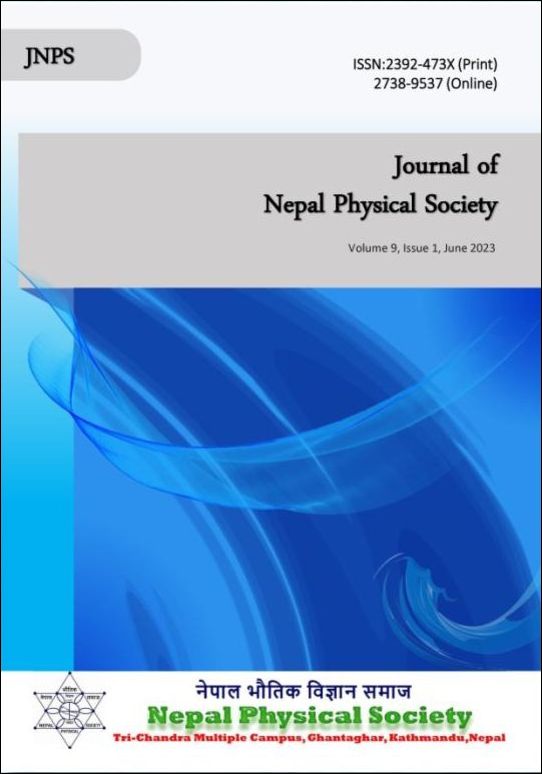Optical and Electrical Properties of Homo and Heterojunction Formed by the ZnO/FTO and CuO/ZnO/FTO Nanostructures
DOI:
https://doi.org/10.3126/jnphyssoc.v9i1.57600Keywords:
Zinc oxide, copper oxide, fluorine doped tin oxide, heterojunction,, photo responseAbstract
The most common materials used to create electrical and optoelectronic devices for a variety of applications including transistor, sensor and detector are semiconductor nanostructures. Combining the nanostructures can result semiconductor homostructure and heterostructure. The homojunction of ZnO/FTO and heterojunction of CuO/ZnO/FTO coated glass substrate are formed using spray pyrolysis technique. The optical band gap for the FTO, ZnO, ZnO/FTO and CuO/ZnO/FTO films calculated using data from UV-visible spectroscopy are 3.629 eV, 3.236 eV, 3.113 eV and 1.456 eV respectively. The observed ohmic behavior of ZnO/FTO homojunction is due to the close band gap of FTO (i.e. Eg = 3.629 eV) and ZnO (Eg = 3.236 eV) whereas the non-ohmic behavior of CuO/ZnO/FTO heterojunction is due to the significant different in band gap energy of CuO (i.e. Eg = 1.456 eV) and ZnO (Eg = 3.236 eV). The photocurrent for ZnO/FTO homojunction increases from 232 μA to 350 μA for visible light illumination and from 232 μA to 400 μA for UV light illumination at bias voltage of 2.5 V. There is no significantly changed in the threshold voltage in visible region. For the CuO/ZnO/FTO heterojunction, the photocurrent increases from 280 μA to 390 μA for visible illumination and from 280 μA to 480 μA for UV illumination at 2.5 V. The enhancement of channel current in both sample (i.e. homojunction and heterojunction) under visible illumination is due to detrapping the charge carriers from mid gap states and released to the conduction band. The large enhancement of photocurrent under UV illumination is due to band gap absorption. Threshold voltage for CuO/ZnO/FTO non-ohmic device is shifted negatively from 1 V to 0 V with increasing the frequency of incident radiation. It suggests that the heterojunction formed by CuO/ZnO/FTO structure is applicable for broad band photo detector.
Downloads
Downloads
Published
How to Cite
Issue
Section
License
All right reserved. No part of this Journal may be reproduced in any form or by any electronic or mechanical means, including information storage and retrieval system, without permission in writing from the publisher, except by a reviewer who may quote brief passage in a review. The views and interpretation in this journal are those of author(s) and they are not attributable to the NPS.




